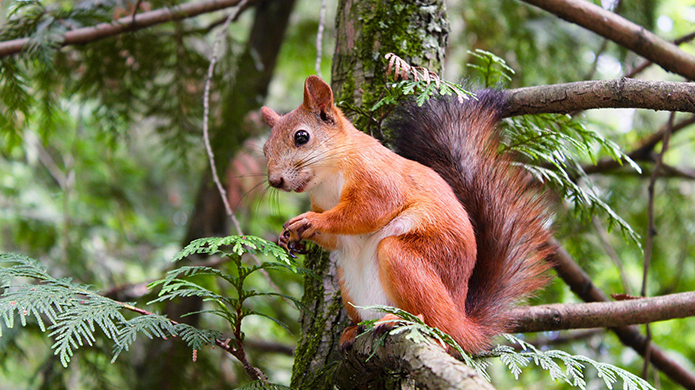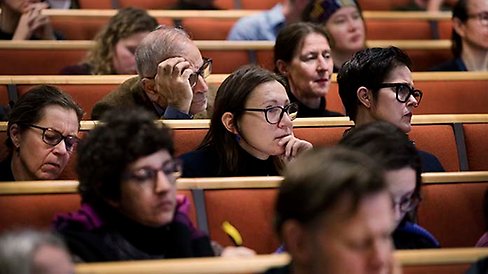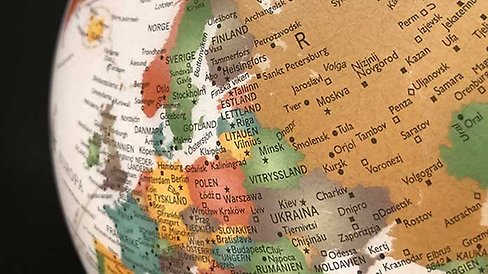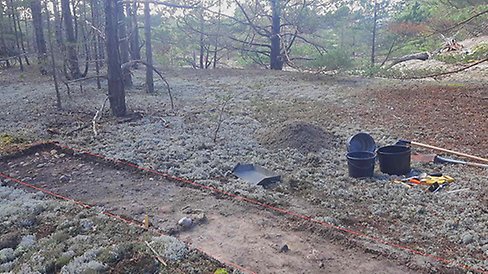Animal perspectives help us understand the world – new anthology highlights the non-human in literature
Literary texts can help us understand society, why we act as we do and why the world is like it is. Traditionally, this is done using a human perspective, but what happens if we instead make animals our focus? This is what the literary scholars in the Ratatǫrsk network do, and in their new anthology Squirrelling External link. they describe a research field undergoing transformation.
External link. they describe a research field undergoing transformation.

“We can see how increasing numbers of works and authors are becoming interested in more than human relationships, which is part of a major post-humanist re-evaluation of what people are doing to the planet and how we can continue to live on it. Farm animals have been my research interest, so I have made tangible observations about how our relationship to animals is linked to the climate issue, but also our approach to how we understand the world,” says Amelie Björck, associate professor of Comparative Literature.
Squirrelling: Human–Animal Studies in the Northern-European Region External link.
External link.
Editors: Amelie Björck, Ann-Sofie Lönngren, Claudia Lindén
Publisher: Södertörn Publications 2022.'
The anthology will be released on 7 June 2022. More information is available in the university calendar.
The Ratatǫskr Research Group for Literary Animal Studies was formed in 2018 and wants to use the Squirrelling anthology to describe the research field of animals studies, which has undergone exciting and comprehensive change in recent years. Its perspectives have widened and specific subfields have emerged.
Postmodern ideas
Like many other areas of research in the humanities, literary animal studies has taken many of its ideas from postmodern theories. These theories question established orders and, in themselves, strive to be inclusive. Claudia Lindén, professor of Comparative Literature, whose contribution to the book is a text about how the bear is used in National Romantic literature, explains:
“In my text, I show how people relate to the bear and how literature can dissolve the boundaries between humans and animals. Among other things, the article examines a work by Selma Lagerlöf, in which the bear is equated with the good Samaritan. A bear saves a man from freezing to death, but the man betrays it and, the following day, hunts the bear, which kills the man. His wife then says that the bear was obeying God’s commandments, but the man wasn’t. The bear becomes a moral agent,” says Claudia Lindén.
Readings that bring new perspectives
Her colleague, Ann-Sofie Lönngren, professor of Comparative Literature, writes about three stories by Sami author Kirste Paltto in her chapter. Literature by indigenous peoples is often of great interest in literary animal studies, as their traditions are often different to the hierarchical, Christian, western ones found in a lot of other literatures.
“In those, God stands above everything, then humans, then animals. But Sami literature, for example, interrogates this hierarchy and the boundaries between animal and human and between different species, which I can see in these novellas. There are many hybrids and transformations, subjects in which I am very interested,” she says.
Bokens tredje redaktör, Amelie Björck, har även hon bidragit med ett eget kapitel utifrån sin forskning.
The book’s third editor, Amelie Björck, has also contributed a chapter based on her research.
“In my text I present three different readings, or interpretations, of the Belgian film Bullhead from 2011. This is a film that takes up the problems surrounding the use of illegal hormones in animal husbandry. First I interpret the film from the perspective of human relationships, to which we are accustomed. Then from the perspective of the farm animals. Finally, I examine the microbiological perspective where, for example, resistance to antibiotics is hanging in the balance. Depending on which perspective you choose, entirely different dramas result, shifting from private to global dimensions,” says Amelie Björck.
Northern European perspectives
Squirrelling puts a spotlight on the research field in northern Europe. The contributing authors come from Sweden, Norway, Iceland, Finland, Denmark and Poland. What unites them is that they come from countries that share the same ideals, farming culture and approach to environmental and animal rights issues. The anthology is the first is what is planned to be a series of publications from Comparative Literature at Södertörn University. The book is published by Södertörn Publications as part of the Södertörn Academic Studies series.
Page updated
02-01-2023





